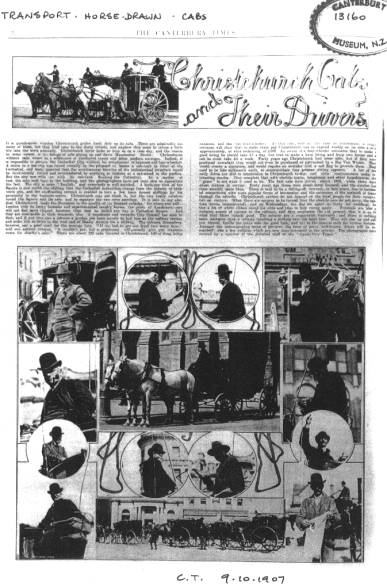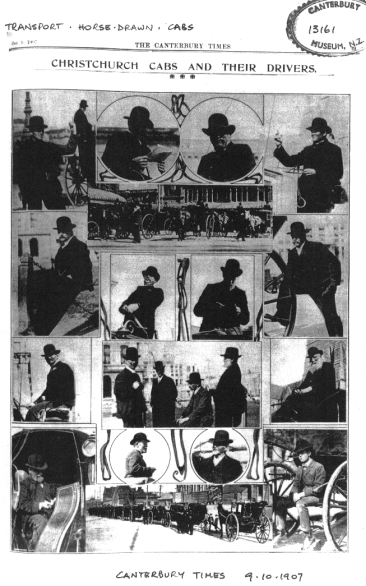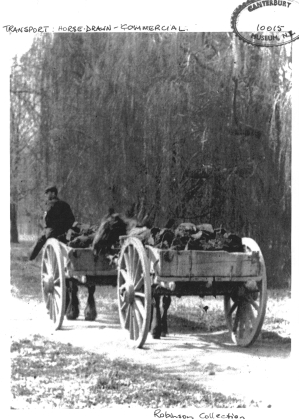More Christchurch cabmen &c - early 1900s
|

Is one of these characters John Bartley,
|

in the Canterbury Times of 9 October 1907?
|
|
Partial transcript:
"cabs ..too many of them, but they lend tone to the dusty streets ..infuse a little life into the town generally ..storm in a teacup ..cab-rank in front of the Cathedral ..The city is more 'English', and everyone is well satisfied ..Christchurch may not think it, but the city really revolves round the Square and its cabs ..they are reasonable in their demands too. A beneficent and versatile City Council has seen to that ..'If we had to get our legal fare every time,' said one ancient cabman, 'it wouldn't pay, but a gentleman will usually give you sixpence extra for charity's sake.' There are about 125 cabs licensed in Christchurch, 100 of them being hansoms and the rest four-wheelers ..There is said to be a falling-off ..in late years, due to increased competition with more popular forms of locomotion and the extension of the network of trams through the suburbs ..Christchurch cabbies do not depend on the local people for their revenue, but on visitors.. weddings.. Funerals.."
|

Coal suppliers, c1905.
|

Cartman, 191?-192?
|
State Coal deliveries, probably to suburban vendors such as the Bartley's Tuam Street yard. With the decline of hansom cabfare income, diversification would have been required for the self-employed to survive in horse-powered haulage work.
'Carriers' were a general occupational group, interacting less than did cabmen or company staff with moneyed clientele - who locally ran their own dray crew and were first to replace these with motor vehicles. Small owner-operators and skilled craft workers were thus squeezed out of the transport sector, by corporate and industrial capital equipment, service sector office holders and technicians, and investors.
|
Less pay made for reduced spending power, more casual dress, and harder working conditions. Mechanisation thus fed economic depression, social upheaval, and ultimately destruction of the old world - for profitable reconstruction - by mechanised warfare.
These illustrations are ©opyright from the Canterbury Museum Documentary Research Centre. Family may
email requests for higher resolution scans to view picture detail: c2MB downloads; delete the [NoSpam] guard from the email address.
|
|
|
 InfoHelp
InfoHelp
